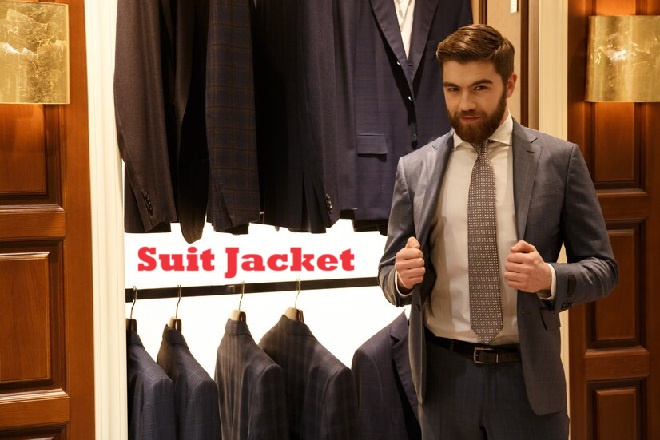
Wearing a suit jacket that fits perfectly can make all the difference in how you look and feel. Whether you’re dressing for a job interview, a wedding, or a night out, the right fit can boost your confidence and leave a lasting impression. But how should a suit jacket fit? Let’s delve into the details to ensure you get it right every time.
Why Fit Matters
The fit of a suit jacket is crucial. It’s not just about looking good; it’s about feeling good too. A well-fitted jacket can make you stand taller, appear more confident, and project a polished, professional image. On the flip side, an ill-fitting jacket can do the exact opposite, making you look sloppy and unkempt. So, how do you ensure your jacket fits just right?
The Shoulders
The shoulders are the foundation of a suit jacket. The seam where the shoulder meets the sleeve should align perfectly with the edge of your shoulder bone. Think of the shoulders as the foundation of a house; if they don’t fit well, everything else will be off. Too tight, and you’ll feel restricted; too loose, and you’ll look like you’re wearing a jacket that’s a size too big.
The Chest and Torso

The jacket should hug your chest comfortably without pulling or gaping. You should be able to button it without strain, and there should be no unsightly wrinkles or bulges. When fastened, the jacket should lay flat against your torso, providing a sleek and streamlined silhouette. A simple test is to slide your hand between your chest and the jacket; there should be just enough room for your hand to fit comfortably.
The Waist
A suit jacket should taper slightly at the waist to accentuate your natural shape. This tapering helps create a V-shaped silhouette that is universally flattering. However, the fit should not be so tight that it pulls at the buttons or causes the fabric to stretch. If the waist is too loose, the jacket will look boxy and unflattering.
The Length of the Jacket
The length of the jacket can make or break the overall look. Ideally, the jacket should cover your buttocks and the crotch area. A quick way to check this is by letting your arms hang naturally; the bottom of the jacket should reach your knuckles. This length ensures a balanced and proportionate appearance, elongating your frame without overwhelming it.
The Sleeves
Sleeve length is another critical factor. The sleeves should end just at the wrist bone, allowing about half an inch of your dress shirt cuff to show. This bit of cuff adds a touch of elegance and sophistication to your overall look. If the sleeves are too long, it can make your arms appear shorter; too short, and it disrupts the visual harmony of the suit.
The Collar
The collar of the jacket should sit flat against the back of your neck without any gaps. It should also show about half an inch of your shirt collar above it. A well-fitted collar enhances the overall look by framing your face and adding to the polished appearance of the suit. Any gaps or tightness here can be distracting and take away from the overall look.
The Buttoning
Button stance is another important aspect of fit. For a two-button jacket, the top button should sit just above your navel. For a three-button jacket, the middle button should do the same. This placement ensures that the jacket flatters your figure without distorting your proportions. When standing, always button the jacket (except the bottom button on a two- or three-button jacket), and unbutton it when sitting down.
The Back
The back of the jacket should be smooth, with no fabric pulling or bunching. It should contour to your natural back shape, providing a sleek and fitted look. Check for any horizontal lines or wrinkles, which indicate that the jacket is too tight. A well-fitted back ensures comfort and ease of movement, allowing you to look and feel your best.
Trying On the Jacket
When trying on a suit jacket, it’s essential to move around. Raise your arms, sit down, and walk a few steps to ensure the jacket remains comfortable and doesn’t restrict your movement. Pay attention to how the jacket feels across your shoulders, chest, and back. The right fit should allow for natural movement while maintaining a sharp, tailored appearance.
Common Fit Issues and Solutions

1. Shoulders Too Wide or Narrow: If the shoulders are too wide, it creates a droopy effect. Too narrow, and the jacket will pull across the upper back. Solution: Opt for a jacket with a shoulder width that matches your own or get it tailored.
2. Chest and Waist Too Tight or Loose: A too-tight chest will pull at the buttons, while a too-loose chest will look baggy. Solution: Tailoring can help adjust the chest and waist for a more tailored fit.
3. Sleeve Length Issues: Sleeves that are too long or too short can disrupt the balance of the suit. Solution: Have the sleeves adjusted so they end at your wrist bone.
4. Jacket Length Problems: A jacket that’s too long or too short can throw off your proportions. Solution: Ensure the jacket length reaches your knuckles when your arms are relaxed.
Tips for Different Body Types
1. Athletic Build: Opt for a fitted jacket that highlights your shoulders and tapers at the waist.
2. Slim Build: Choose a jacket with a slim cut that adds structure and avoids looking oversized.
3. Larger Build: Look for a jacket with a slightly looser fit that provides comfort without looking too baggy.
4. Tall Build: Ensure the sleeves and jacket length are long enough to complement your height.
Custom Tailoring vs. Off-the-Rack
Custom Tailoring: Offers a perfect fit tailored to your body measurements, but can be more expensive.
Off-the-Rack: More affordable and convenient, but may require alterations to achieve the ideal fit.
Conclusion
A well-fitted suit jacket is essential for looking sharp and feeling confident. By paying attention to the details of the fit, from the shoulders to the sleeves, you can ensure that your suit jacket enhances your appearance and provides comfort. Whether you choose a custom-tailored jacket or an off-the-rack option, understanding how a suit jacket should fit will help you make the best choice.
FAQs
1. How can I tell if my suit jacket fits properly?
Check the shoulders, chest, waist, length, sleeves, and collar for a snug but comfortable fit. Ensure there are no wrinkles or pulling when buttoned.
2. What should I do if my suit jacket is too tight?
If your suit jacket is too tight, consider taking it to a tailor for adjustments. If it’s significantly tight, you might need a larger size.
3. How long should a suit jacket be?
The suit jacket should cover your buttocks and the crotch area. When your arms are relaxed, the jacket should reach your knuckles.
4. Can I wear an off-the-rack suit jacket without alterations?
You can, but it’s often best to have minor alterations done to ensure the best fit. Adjustments to the sleeves, waist, and length can make a big difference.
5. What is the importance of showing shirt cuffs under the suit jacket sleeves?
Showing about half an inch of shirt cuff adds a touch of sophistication and completes the overall look. It also indicates a well-fitted suit jacket.
READ MORE: How to Clean a Leather Jacket?

